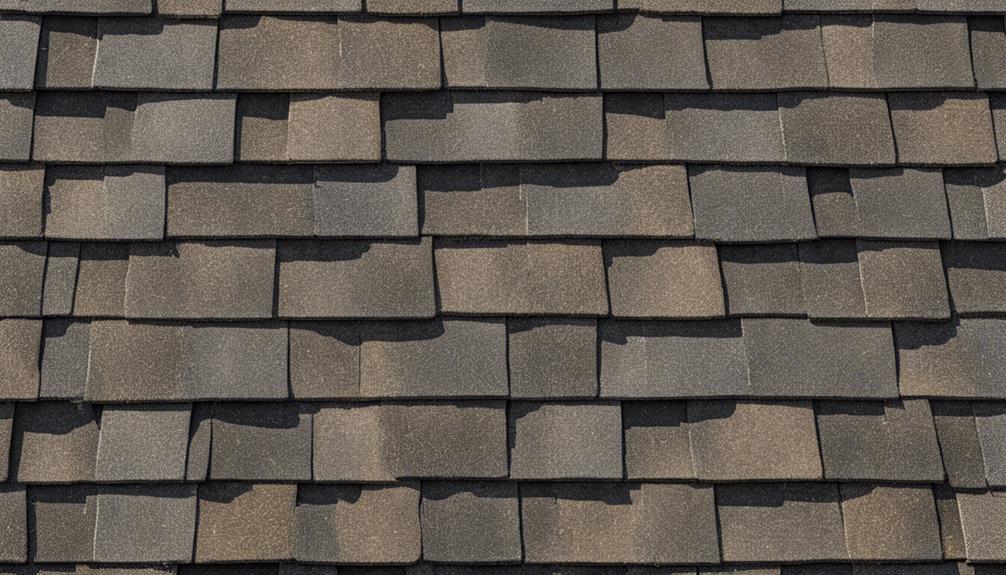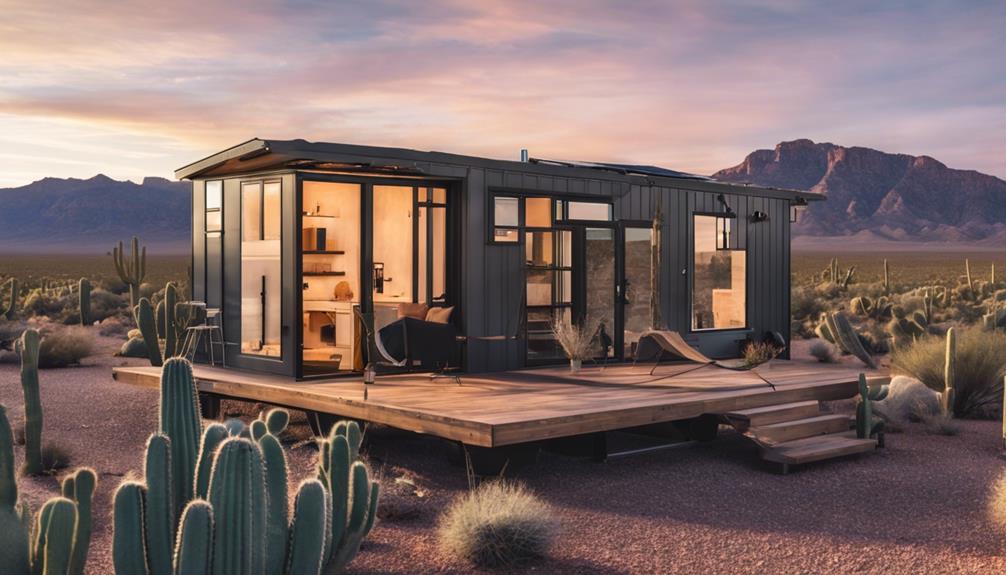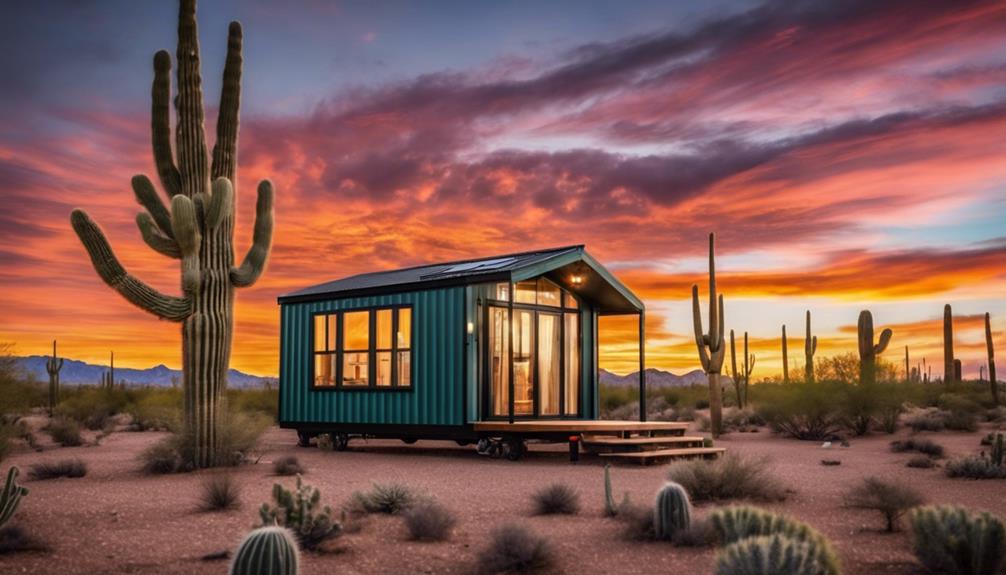Architecture Home Styles
Solving Common Roof Shingle Problems: A How-To Guide
Tackle the mysteries of roof shingle maintenance and discover expert tips to protect your home – your roof's future depends on it!

As we address the nuances of maintaining roof shingles, we uncover subtle yet significant challenges that homeowners may encounter. Understanding the intricacies of shingle damage is crucial, but what lies beyond identification is a practical roadmap to resolution that can safeguard your property from potential hazards.
Let's explore how mastering the art of shingle repair can not only save you money but also secure the longevity of your roof.
Key Takeaways
- Regular inspection is vital for early issue detection and prevention of leaks.
- Safety measures like proper gear and assistance are crucial during repairs.
- Identify damage, gather tools, remove and replace shingles carefully for effective repair.
- Maintain gutters, trim trees, ensure ventilation, and stay proactive for a healthy roof.
Signs of Roof Shingle Damage
Inspecting your roof regularly for signs of damage is crucial in maintaining its longevity and protecting your home from potential issues. When it comes to roof shingles, there are several key indicators of damage to watch out for. Missing shingles can pave the way for water leaks and interior damage, making it essential to address them promptly.
The presence of curled shingles may signal poor ventilation and underlying roof problems that need attention. Additionally, cracked shingles, often caused by temperature fluctuations and aging, can compromise the integrity of your roof. Keep an eye out for granule loss on shingles, as this can indicate aging and reduced protection for your roof.
Engaging in a visual inspection of your roof will enable you to identify these common shingle issues early on, preventing further damage and costly repairs down the road. Remember, proactive maintenance is key to preserving the health and durability of your roof.
Identifying Roof Shingle Damage

When identifying roof shingle damage, a quick visual scan can reveal common issues that may compromise the integrity of your roof. Here are three key signs to look out for:
- Missing Shingles: Inspect your roof for any gaps or areas where shingles are entirely absent. Missing shingles can leave your roof vulnerable to water infiltration and indicate issues with the installation or severe weather conditions.
- Curled Shingles: Keep an eye out for shingles that are curling at the edges. Curling can be caused by factors like sunlight exposure, poor ventilation, or installation problems. Curled shingles are more prone to damage and may need repair to prevent further issues.
- Cracked Shingles: Check for any shingles with visible cracks. Cracks can develop due to weather exposure, aging, or physical impact, leading to potential water leaks. Addressing cracked shingles promptly is essential to maintain the protection of your roof and prevent further damage to the roofing materials.
Causes of Roof Shingle Damage
Extreme weather conditions, critters, and poor attic ventilation are among the primary culprits behind roof shingle damage. Weather elements like hail, wind, and heat can cause significant harm to shingles, leading to cracks and breakage. Critters such as birds and squirrels may peck or chew at the shingles, causing damage over time. Inadequate attic ventilation can result in heat and moisture buildup, accelerating the deterioration of shingles. Tree branches that rub against the roof during windy conditions can cause wear and tear on the shingles, reducing their lifespan.
To help you understand the causes of roof shingle damage more clearly, here's a table summarizing the main culprits:
| Causes | Description | Prevention |
|---|---|---|
| Extreme Weather | Hail, wind, and heat can lead to cracks and breakage in shingles. | Regular roof inspections |
| Critters | Birds and squirrels may peck or chew at shingles, causing gradual damage. | Secure attic access |
| Poor Attic Ventilation | Inadequate ventilation accelerates shingle deterioration due to heat/moisture buildup. | Ensure proper ventilation |
Understanding these causes will help you take proactive steps to prevent roof shingle damage and ensure the longevity of your roofing system.
Safety Considerations for Repair

To ensure a safe and successful roof shingle repair, it's crucial to prioritize the necessary safety precautions, such as wearing safety harnesses and hard hats to prevent falls and injuries. Here are three key safety considerations to keep in mind:
- Proper Shoes: It's essential to wear shoes with good traction to avoid slipping on the roof while working. This simple step can significantly reduce the risk of accidents and injuries during the repair process.
- Working with a Partner: Having a partner present can provide additional support and assistance during roof shingle repairs. They can help with handing tools, holding ladders steady, or even provide help in case of an emergency.
- Professional Help for Steep Roofs: For steep roofs, consider seeking professional help. Experts are trained to handle challenging roof repairs safely and efficiently, ensuring that the job is done right without putting anyone at risk.
Prioritizing safety measures like these is crucial for fall prevention and expert handling of roof shingle repairs.
Step-by-Step Repair Instructions
In repairing roof shingles, start by identifying any damaged areas exhibiting signs like curling, cracking, or missing shingles. Once you've located the problematic shingles, gather your tools – a pry bar, roofing cement, roofing nails, and replacement shingles.
Carefully remove the damaged shingles by lifting the tabs and extracting the nails with precision. Next, replace the damaged shingles with new ones, ensuring a secure fit by fastening them with roofing nails.
To finish the repair, apply roofing cement to the edges of the new shingles to create a watertight seal that will protect your roof from further damage. By following these step-by-step instructions, you can effectively fix issues like curling or cracked shingles, restoring the integrity of your roof and ensuring its longevity.
Frequently Asked Questions
How Do You Fix Shingles That Are Lifting?
When shingles are lifting, we fix them by applying roofing sealant underneath and pressing down firmly for adhesion. Use a caulking gun for precise application to prevent further lifting.
Make sure the shingle aligns properly with surrounding ones for a seamless look. Monitor the repair periodically for any re-lifting signs.
It's crucial to act promptly to prevent water damage and maintain the integrity of your roof.
How Do You Repair a Section of Shingles?
When repairing a section of shingles, we start by identifying the damaged area and carefully lifting the tabs to access the nails. Using a pry bar, we remove the nails securing the damaged shingles.
After discarding the old shingles, we replace them with new ones of the same type and color. Securing the new shingles in place with nails and roofing cement provides added protection.
This process ensures a durable and visually appealing repair job.
How Do You Match Roof Shingles for Repair?
When matching roof shingles for repair, we select the same color, style, and material to ensure uniformity. It's vital to find replacement shingles with matching dimensions and thickness for a seamless look.
We always consider buying extra shingles to prepare for future repairs and potential color variations. Sourcing replacement shingles from the same manufacturer guarantees compatibility and quality, preserving the roof's aesthetic appeal and overall integrity.
How Do You Fix Curled Shingles on a Roof?
When shingles curl on a roof, we tackle the issue head-on. Apply sealant under the curled corners, then press down with a heavy object until it dries.
To reinforce the fix, glue the edges to prevent future curling. When adding new shingles, align them precisely with the existing ones for a uniform look. Use a caulking gun for precise application of sealant.
These steps ensure a sturdy and visually appealing repair.
Conclusion
In conclusion, identifying and solving common roof shingle problems is crucial for maintaining the integrity of your roof. By addressing issues like curling, cracking, or missing shingles promptly, you can prevent further damage and costly repairs down the line.
Remember, a stitch in time saves nine when it comes to roof maintenance. Stay proactive, stay informed, and your roof will thank you for it in the long run.
- About the Author
- Latest Posts
Introducing Ron, the home decor aficionado at ByRetreat, whose passion for creating beautiful and inviting spaces is at the heart of his work. With his deep knowledge of home decor and his innate sense of style, Ron brings a wealth of expertise and a keen eye for detail to the ByRetreat team.
Ron’s love for home decor goes beyond aesthetics; he understands that our surroundings play a significant role in our overall well-being and productivity. With this in mind, Ron is dedicated to transforming remote workspaces into havens of comfort, functionality, and beauty.
Architecture Home Styles
How to Explore Native Houses in Indonesia
Catch a glimpse of Indonesia's cultural treasures through native houses, where each intricate detail holds a secret waiting to be discovered.

So, you think you've seen it all in Indonesia? Well, think again. Exploring native houses in this diverse archipelago offers a glimpse into a world where tradition meets craftsmanship in a harmonious blend.
From the intricate carvings to the unique architectural designs, each house tells a story waiting to be uncovered, inviting us to step into a realm where time seems to stand still.
But what lies beyond the façade of these cultural gems is a journey that promises to unravel the tapestry of Indonesia's rich heritage, revealing a side often overlooked by many travelers.
Key Takeaways
- Visit Batak, Toraja, and Joglo Houses for diverse architectural experiences.
- Discover intricate carvings and symbolic details in traditional Indonesian homes.
- Immerse in cultural heritage through communal spaces and ancient craftsmanship.
- Learn about Indonesia's rich history and values by exploring native houses.
Traditional Houses in Indonesia
In Indonesia, traditional houses embody rich cultural heritage through their unique architectural designs and symbolism. Among these remarkable dwellings, the boat-shaped houses stand out for their distinctive characteristics. The Batak House, found in certain regions, showcases intricate carvings and utilizes natural materials, reflecting a deep connection to the environment. These boat-shaped structures not only serve as homes but also as symbols of cultural identity and traditions passed down through generations.
The boat-shaped design of these traditional houses in Indonesia not only provides shelter but also represents a deeper meaning within the community. The intricate carvings on the Batak House, for example, tell stories of ancestry and spiritual beliefs, adding layers of significance to the architectural aesthetics. Through these boat-shaped dwellings, the indigenous peoples of Indonesia honor their heritage and preserve their cultural roots in a rapidly changing world.
Cultural Significance of Indigenous Dwellings

Exploring the intricate cultural significances embedded within indigenous dwellings in Indonesia unveils a tapestry of architectural symbolism and traditional values that resonate deeply within the communities they inhabit. These houses serve as more than mere shelters; they embody the cultural beliefs and practices of the diverse Indonesian tribes. The multi-generational living arrangements seen in houses like the Rumah Gadang in West Sumatra and the Rong Houses in Dayak communities highlight the importance of family and community ties in Indonesian society.
Moreover, the communal living spaces found in the Tongkonan House in Tana Toraja and the Uma Lulik in Timor foster a sense of togetherness and shared responsibilities among the inhabitants. Each architectural element, from the intricate carvings to the circular shapes and elevated stilts, holds deep symbolic meaning rooted in centuries-old traditions. These indigenous dwellings aren't just physical structures but living embodiments of Indonesia's rich cultural heritage, where every beam and wall tells a story of cultural continuity and communal harmony.
Top Native Houses to Visit
With intricate architectural designs and rich cultural symbolism, a journey to explore the top native houses in Indonesia promises a captivating immersion into the country's diverse heritage. Here are some of the top native houses you shouldn't miss:
| Native House | Features |
|---|---|
| Batak Houses | Boat-shaped roofs, intricate carvings, spaces for daily life activities like a living room and dining room. |
| Toraja Houses | Distinct saddleback roof design, used in ceremonies, areas for daily life such as a living room and dining room. |
| Joglo Houses | Elaborate wooden structures, symbolizing social hierarchy, with designated spaces for a living room and dining room. |
These native houses offer insights into the daily lives of the people inhabiting them. From the communal spaces like the living room where gatherings take place to the dining room where meals are shared, each house reflects the cultural practices and traditions of its respective community. Exploring these spaces provides a unique opportunity to understand the interconnectedness between architecture, daily life, and cultural identity in Indonesia.
Exploring Architectural Features

Amidst the vibrant tapestry of Indonesia's architectural landscape, one encounters a rich mosaic of cultural intricacies within the native houses that stand as living testaments to the country's diverse heritage. As we delve into exploring the architectural features of these remarkable dwellings, we're greeted by a fusion of craftsmanship and symbolism that captivates the senses:
- Boat-shaped roofs that gracefully mimic the curves of traditional Indonesian vessels, offering a nod to the nation's maritime history.
- Intricate carvings adorning the facades and interiors, telling stories of myths, legends, and ancestral wisdom.
- Wooden craftsmanship that showcases the mastery of artisans, each piece meticulously crafted to perfection.
- Natural materials seamlessly integrated into the structures, connecting the homes to the earth and reflecting a harmonious relationship with nature.
- Symbolic details embedded in every corner, from the layout to the decorations, embodying cultural beliefs and societal values passed down through generations.
Exploring these architectural marvels unveils a world where history, artistry, and tradition converge in a celebration of Indonesia's rich cultural heritage.
Immersing in Indonesian Hospitality
Immerse yourself in the captivating tapestry of traditional Indonesian hospitality by residing in native houses like the Batak House in North Sumatra or the Rumah Gadang in West Sumatra. These native houses not only offer a place to stay but also provide a gateway to the cultural heritage of Indonesia. The intricate carvings, boat-shaped roofs, and eco-friendly construction of these houses showcase the deep-rooted traditions and craftsmanship of the local communities.
Here is a table highlighting some of the unique aspects of traditional Indonesian hospitality found in native houses:
| Aspect | Description |
|---|---|
| Architectural Features | Intricate carvings, boat-shaped roofs |
| Social Significance | Symbolism of social hierarchy in houses like the Joglo House in Central Java |
| Eco-Friendly Construction | Use of sustainable materials like bamboo and thatch in houses like the Sasak House in Lombok |
| Spiritual Connections | Preservation of spiritual connections and communal living traditions in houses like the Uma Lulik in Timor or the Honai House in Papua |
| Local Way of Life | Experience the daily lives and customs of the local communities while staying in these native houses |
Staying in these native houses will not only provide you with a unique accommodation experience but also a deep dive into the rich tapestry of Indonesian traditions and hospitality.
Frequently Asked Questions
What Are Traditional Indonesian Houses Called?
Traditional Indonesian houses are called 'Rumah Adat.' These structures are more than just dwellings; they're living representations of Indonesia's rich cultural tapestry. Crafted from natural materials like wood and thatch, they stand as testaments to the country's diverse traditions.
Each region boasts its own unique design, influenced by local customs and beliefs. Exploring these native houses allows us to delve into the heart of Indonesia's vibrant heritage and architectural ingenuity.
What Is Indonesian Housing Like?
Indonesian housing embodies a rich tapestry of cultures and traditions, showcasing unique architecture and sustainable practices. From boat-shaped roofs to intricate carvings, these homes reflect a deep connection to nature and community.
Families often live together in multi-story structures, fostering bonds and kinship. Sustainability and cultural symbolism intertwine in Indonesian homes, creating a harmonious blend of functionality and heritage preservation.
Each dwelling tells a story of tradition, innovation, and unity.
What Is Typical Indonesian Housing?
We'll dive into the essence of typical Indonesian housing, showcasing the diverse array of styles like Batak, Toraja, Joglo, and more. These houses boast unique architectural features, reflecting the rich heritage of Indonesia's indigenous communities.
From intricate carvings to bamboo and thatch construction, each house tells a story of cultural significance and tradition. Multi-generational living arrangements further deepen the bond between people, highlighting the social and spiritual connections within the community.
What Is a House Called in Indonesia?
In Indonesia, a house is often referred to as a 'rumah' in Bahasa Indonesia. These structures aren't merely places of dwelling; they embody the essence of Indonesian culture and heritage.
Each region has its unique names for traditional houses, such as 'rumah adat' or 'rumah suku,' showcasing the diverse architectural styles and craftsmanship.
These homes serve as living monuments, reflecting the country's history, beliefs, and social structure.
Conclusion
In conclusion, exploring native houses in Indonesia is like taking a journey through a living museum of cultural heritage. Each traditional dwelling tells a story of the past and present, showcasing the craftsmanship and traditions of its people.
By immersing ourselves in these architectural wonders, we can truly appreciate the beauty and diversity of Indonesia's indigenous cultures. So, let's hit the road and dive into the rich tapestry of Indonesian history – the world is our oyster!
- About the Author
- Latest Posts
Introducing Ron, the home decor aficionado at ByRetreat, whose passion for creating beautiful and inviting spaces is at the heart of his work. With his deep knowledge of home decor and his innate sense of style, Ron brings a wealth of expertise and a keen eye for detail to the ByRetreat team.
Ron’s love for home decor goes beyond aesthetics; he understands that our surroundings play a significant role in our overall well-being and productivity. With this in mind, Ron is dedicated to transforming remote workspaces into havens of comfort, functionality, and beauty.
Architecture Home Styles
How Do You Mix Modern and Traditional Art Styles?
Balancing the fusion of modern and traditional art styles in a space can be a captivating challenge – want to know the secret?

When it comes to blending modern and traditional art styles, finding the perfect equilibrium can seem like an insurmountable task. However, by carefully curating a space that seamlessly fuses the two, the results can be awe-inspiring.
But how exactly can this be achieved? Stay tuned as we unravel the intricacies of merging these seemingly contrasting artistic realms to create a harmonious and captivating environment that speaks to the essence of both styles.
Key Takeaways
- Blend colors, materials, and shapes for a cohesive look.
- Establish harmony through shared textures and patterns.
- Use common color palettes and subtle details for cohesion.
- Integrate traditional and modern art for a stylish, effortless design.
Dominant Style Selection
Upon evaluating the home shell and architecture, we determine the dominant style by applying the 80/20 rule, allocating 80% for the primary style and 20% for the secondary style. To achieve a harmonious blend of modern and traditional design, we strategically place traditional pieces as the foundation, anchoring the space with their timeless elegance. Modern art with retro undertones can then be incorporated to infuse a touch of innovation and vitality. By integrating contemporary finds alongside vintage furniture, we create an eclectic yet cohesive overall look that seamlessly marries the two design styles.
Selecting the dominant style is crucial, as it sets the tone for the entire space. By opting for a mix of modern and traditional elements, we can strike a balance that's both refreshing and sophisticated. The key lies in seamlessly blending the two styles to create a visually stimulating environment that captivates the eye and sparks curiosity. When done thoughtfully, the fusion of modern and traditional design can result in a space that isn't only aesthetically pleasing but also rich in character and depth.
Harmony Vs. Contrast

After establishing the dominant style selection in a space blending modern and traditional art styles, the next crucial consideration is determining whether to prioritize harmony or contrast in the overall design approach. When mixing modern and traditional elements, the choice between harmony and contrast plays a significant role in the visual impact of the room.
| Harmony | Contrast |
|---|---|
| Evenly distribute elements from both styles | Use colors and materials to blend or contrast styles |
| Create a cohesive look | Achieve a bold and dynamic effect |
| Balance furniture choices for a calming harmony | Opt for striking contrasts to reflect personal style |
To achieve harmony, blend colors and materials seamlessly, integrating modern and traditional pieces throughout the room. Contrast, on the other hand, can be achieved by strategically placing items that diverge in style, color, or era. Whether aiming for a contemporary feel or a touch of vintage charm, the decision between harmony and contrast will define the overall aesthetic of the space.
Starting With Essential Pieces
We start the design process by focusing on selecting essential furniture pieces that will serve as the foundation for blending modern and traditional art styles in the room. It's crucial to establish a strong base with key elements such as traditional seating arrangements or larger units before introducing modern art pieces or contemporary furniture.
Sofas and tables play a vital role in setting the tone for the space, providing a canvas for layering different styles. When deciding on chairs, strategic placement can add personality and elevate the overall design. Narrowing down furniture choices based on the dominating style helps in determining whether to aim for harmony or contrast when mixing modern and traditional elements.
Tying Art Pieces Together

To achieve a cohesive blend of modern and traditional art styles in a space, the key lies in tying art pieces together through shared colors, shapes, textures, or patterns. When merging different art styles, it's essential to create visual harmony by incorporating common elements that bridge the gap between traditional and modern aesthetics.
Here are five strategies to unify art pieces effectively:
- Utilize a similar color palette: Using shared colors across traditional and modern artworks can create a cohesive appearance and tie the pieces together seamlessly.
- Focus on common shapes: Look for recurring shapes or forms in the art pieces to establish a visual connection and blend the styles cohesively.
- Consider shared textures: Incorporating similar textures in both traditional and modern art can enhance the overall visual cohesion of the space.
- Highlight recurring patterns: Identifying and emphasizing common patterns in the artworks can help unify them and create a harmonious look.
- Pay attention to subtle details: Small details in art pieces can play a significant role in blending traditional and modern styles, so focusing on these nuances is key to achieving a cohesive design.
Adding Final Touches
Incorporating strategic elements like velvet throw pillows and thoughtful lighting choices plays a crucial role in enhancing the fusion of modern and traditional art styles within a space. These final touches serve as the bridge that connects the two worlds, creating rooms that appear effortless and stylish. By mixing traditional and modern aesthetics with a neutral color palette, you can achieve a harmonious balance that's visually appealing.
When adding final touches, consider integrating a vintage piece of art alongside contemporary curves to add depth and character to the room. This juxtaposition of styles creates an eclectic atmosphere that's both intriguing and inviting. Combining modern and traditional styles in this manner allows for a seamless transition between the two, resulting in a space that feels cohesive and well-thought-out.
To master the art of mixing traditional and modern art styles, focus on layering textures, incorporating unexpected elements, and paying attention to the finer details. By following these design tips, you can transform your space into a great place to start experimenting with the fusion of vintage and contemporary art, ultimately achieving a look that's both timeless and fresh.
Frequently Asked Questions
Can You Mix Modern and Traditional Styles?
Yes, we can seamlessly blend modern and traditional styles to create a captivating fusion. By intertwining contemporary elements with classic artistry, we achieve a design that's both timeless and cutting-edge.
This harmonious marriage of old and new offers a fresh perspective and cultivates a rich visual tapestry. Embracing the juxtaposition of modern and traditional styles leads to an innovative approach that sparks creativity and intrigue in interior design.
How Do You Blend Traditional and Modern?
When blending traditional and modern art styles, we aim for a seamless integration that harmonizes the contrasting aesthetics. Finding commonalities in colors, shapes, and textures between the two styles is key.
What Is the Combination of Traditional and Modern Design Called?
The combination of traditional and modern design is known as 'Transitional' style. This aesthetic blends classic elements with contemporary features, creating a balanced and harmonious look.
It seamlessly integrates traditional and modern art pieces, offering a timeless and cohesive space. Transitional design emphasizes comfort, warmth, and simplicity with clean lines and a minimalistic approach.
It aims to merge elements from different eras to achieve a cohesive and innovative design.
How Do You Combine Different Art Styles?
When combining different art styles, we focus on harmony and contrast. By blending complementary colors and themes and experimenting with various mediums, we create a cohesive yet dynamic visual experience.
Symmetry and asymmetry play a crucial role in adding balance and interest to our art arrangements. Dominant styles serve as focal points, while contrasting ones add depth and dimension.
Ultimately, our goal is to personalize spaces and evoke a sense of creativity and innovation.
Conclusion
In conclusion, blending modern and traditional art styles is a delicate dance of balance and creativity. By carefully selecting a dominant style, harmonizing or contrasting elements, and layering essential pieces with unique art, textiles, lighting, and plants, a space can truly come to life.
Embracing imperfections and experimenting with unexpected themes adds depth and personality to the mix. The result? A visually captivating and harmonious fusion of the old and the new.
- About the Author
- Latest Posts
Introducing Ron, the home decor aficionado at ByRetreat, whose passion for creating beautiful and inviting spaces is at the heart of his work. With his deep knowledge of home decor and his innate sense of style, Ron brings a wealth of expertise and a keen eye for detail to the ByRetreat team.
Ron’s love for home decor goes beyond aesthetics; he understands that our surroundings play a significant role in our overall well-being and productivity. With this in mind, Ron is dedicated to transforming remote workspaces into havens of comfort, functionality, and beauty.
Architecture Home Styles
How to Have a Tiny Home in Arizona: Your Essential Guide
Fascinated by the idea of a tiny home in Arizona? Discover how tax considerations can impact your journey in this essential guide.

Embarking on the journey of having a tiny home in Arizona is like navigating through a desert oasis, each step revealing new insights and challenges. From understanding the intricate web of zoning laws to discovering the perfect location that aligns with your tiny living dreams, this essential guide equips you with the knowledge needed to turn your tiny home vision into reality.
But what about the unique tax considerations that come with owning a tiny home in Arizona? Stay tuned to uncover key insights that will make a difference in your tiny home journey.
Key Takeaways
- Understand Arizona zoning laws for placement in suitable zones.
- Seek permits for tiny homes based on location and structure type.
- Explore tax benefits for tiny homeowners through property tax exemptions.
- Build a supportive community through local groups and events for guidance.
Zoning Laws and Regulations in Arizona
When navigating the realm of tiny home living in Arizona, understanding the intricacies of zoning laws and regulations becomes paramount. In Arizona, zoning laws permit tiny houses on foundations in multifamily, detached single-family, and accessory dwelling unit zones.
However, for Tiny Homes on Wheels, they're typically classified as recreational vehicles and must adhere to specific parking regulations within designated zones. Maricopa County has established particular regulations for tiny houses, including constraints on the floor area allowed for permanent structures. On the other hand, Pima County imposes restrictions on Tiny Homes on Wheels through specific codes that govern their placement.
The zoning options for tiny houses in Arizona encompass various zones such as isolated single-family zones, accessory dwelling unit zones, and multifamily zones. Familiarizing oneself with these zoning laws and regulations is crucial for anyone considering embarking on the adventure of tiny home living in Arizona.
Ideal Locations for Tiny Homes

For those seeking ideal locations to establish their tiny homes in Arizona, cities like Phoenix, Tucson, Sedona, and Lakeside present attractive options. When considering where to set up your tiny home in Arizona, keep in mind that Pima County and Coconino County permit the establishment of tiny houses in specific zones. In these areas, tiny homes can be placed in isolated single-family zones, ADU zones, and multifamily zones. For those with tiny houses on wheels, it's important to note that they must be parked in designated R.V. zones in compliance with regulations.
- Phoenix, Tucson, Sedona, and Lakeside are ideal cities for setting up tiny homes in Arizona.
- Pima County and Coconino County allow tiny houses in specific zones.
- Tiny homes can be placed in single-family zones, ADU zones, and multifamily zones.
- Tiny houses on wheels must adhere to regulations in designated R.V. zones.
Tax Considerations for Tiny Home Owners
Exploring the tax implications of owning a tiny home in Arizona reveals potential benefits and considerations that can significantly impact financial planning for homeowners. Tiny home owners in Arizona may qualify for property tax exemptions based on factors like square footage and adherence to green building standards. Additionally, the size of tiny homes could lead to reduced property tax assessments in certain counties. It is crucial for Arizona tiny home owners to familiarize themselves with local tax laws to take advantage of any available tax benefits. Seeking guidance from a tax professional or local tax assessor can provide valuable insights into how owning a tiny home in Arizona may influence property taxes.
Tax Considerations for Tiny Home Owners:
| Key Points | Details | Importance |
|---|---|---|
| Property Tax Exemptions | Available based on square footage and green standards | Maximize Savings |
| Reduced Assessments | Smaller homes could mean lower tax bills | Financial Advantage |
| County Variances | Regulations differ, impacting tax benefits | Local Compliance |
| Professional Advice | Consult with tax professionals for guidance | Optimal Planning |
Finding Community Support in Arizona

By actively engaging with local resources and networking opportunities, tiny home enthusiasts in Arizona can establish a strong sense of community support to enhance their living experience.
Here are some ways to find community support in Arizona:
- Join local Facebook groups like 'Arizona Tiny House Community' for a supportive network.
- Attend tiny house meetups and events in Arizona to connect with like-minded individuals.
- Explore tiny house workshops and seminars in the state to gain knowledge and resources.
- Consider volunteering with non-profit organizations focused on sustainable living and tiny house advocacy in Arizona.
These opportunities not only provide a sense of belonging within the tiny house community but also offer valuable insights, resources, and support for those embracing the tiny home lifestyle in Arizona.
Engaging with these avenues can enrich your experience, foster connections, and empower you to navigate the challenges and joys of sustainable living in the state.
Building and Parking Tips for Tiny Homes
Engaging with the regulations and guidelines for building and parking tiny homes in Arizona is crucial for ensuring compliance and a smooth transition into sustainable living. Tiny homes on foundations in Arizona must adhere to the 2018 IRC Appendix Q requirements, which outline specific space dimensions and safety features to guarantee structural integrity.
Building a tiny home on skids offers a semi-permanent placement option while still allowing for mobility if relocation becomes necessary. For those opting for tiny homes on wheels, meeting mobile home requirements is essential, and a minimum of 160 square feet is required for parking.
The flexibility in setting up tiny homes in various zone types in Arizona provides diverse housing options based on individual preferences. Tiny houses on wheels are particularly popular for their mobility and flexibility, making them an attractive choice for those desiring a minimalist lifestyle without sacrificing comfort.
Frequently Asked Questions
Can I Put a Tiny House on My Property in Arizona?
Yes, we can put a tiny house on our property in Arizona if it complies with local zoning regulations. Different options like multifamily, detached single-family, or accessory dwelling units are available. Land near Maricopa City, Pinal County, offers accessible placement.
How Much Does a Tiny House Cost in Az?
Tiny houses in Arizona can range from $20,000 to $200,000 depending on size and customization. DIY kits start at $8,000, but labor costs add up. Land, utilities, and permits are extra. Building a tiny house can be a cost-effective housing choice.
What Is the Minimum Square Footage for a House in Arizona?
In Arizona, the minimum square footage for a house varies based on its foundation type. For tiny houses on foundations, it's 200 square feet, while those on trailers require at least 160 square feet. Adhering to building codes is essential.
Does Arizona Have a Tiny Home Community?
We do have tiny home communities in Arizona. These communities provide shared amenities, community engagement, and a supportive environment. Living in a tiny house community offers a unique sense of belonging, shared resources, and a close-knit experience.
Conclusion
In conclusion, navigating the world of tiny homes in Arizona may seem like a daunting task, but with the right resources and community support, it can be a breeze.
From zoning laws to building tips, we've covered it all in our essential guide.
So go ahead, take the leap into tiny home living and watch your dreams of a cozy, sustainable lifestyle come to life in the Grand Canyon State!
- About the Author
- Latest Posts
Introducing Ron, the home decor aficionado at ByRetreat, whose passion for creating beautiful and inviting spaces is at the heart of his work. With his deep knowledge of home decor and his innate sense of style, Ron brings a wealth of expertise and a keen eye for detail to the ByRetreat team.
Ron’s love for home decor goes beyond aesthetics; he understands that our surroundings play a significant role in our overall well-being and productivity. With this in mind, Ron is dedicated to transforming remote workspaces into havens of comfort, functionality, and beauty.
-

 Vetted4 weeks ago
Vetted4 weeks ago15 Best Contact Paper for Kitchen Cabinets to Elevate Your Home Decor
-

 Vetted2 weeks ago
Vetted2 weeks ago15 Best Poe Cameras for Home Security – Reviews & Buying Guide
-

 Vetted3 weeks ago
Vetted3 weeks ago15 Best Drain Snakes to Unclog Your Pipes Like a Pro
-

 Beginners Guides5 days ago
Beginners Guides5 days agoI Inhaled Vinegar Fumes
-

 Vetted4 weeks ago
Vetted4 weeks ago14 Best Stationery Brands for Your Next Writing Adventure
-

 Beginners Guides2 weeks ago
Beginners Guides2 weeks agoSwinger Porch Light Color
-

 Mardi Gras Decoration4 weeks ago
Mardi Gras Decoration4 weeks agoWhy Does Hobby Lobby Not Do Mardi Gras?
-

 Vetted2 weeks ago
Vetted2 weeks ago15 Best Blinds for Bathroom Windows to Enhance Privacy and Style























